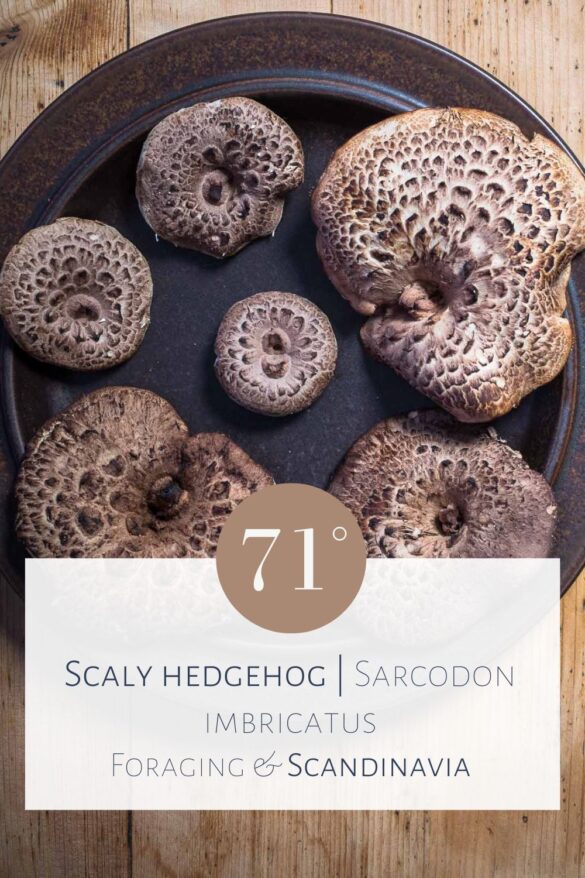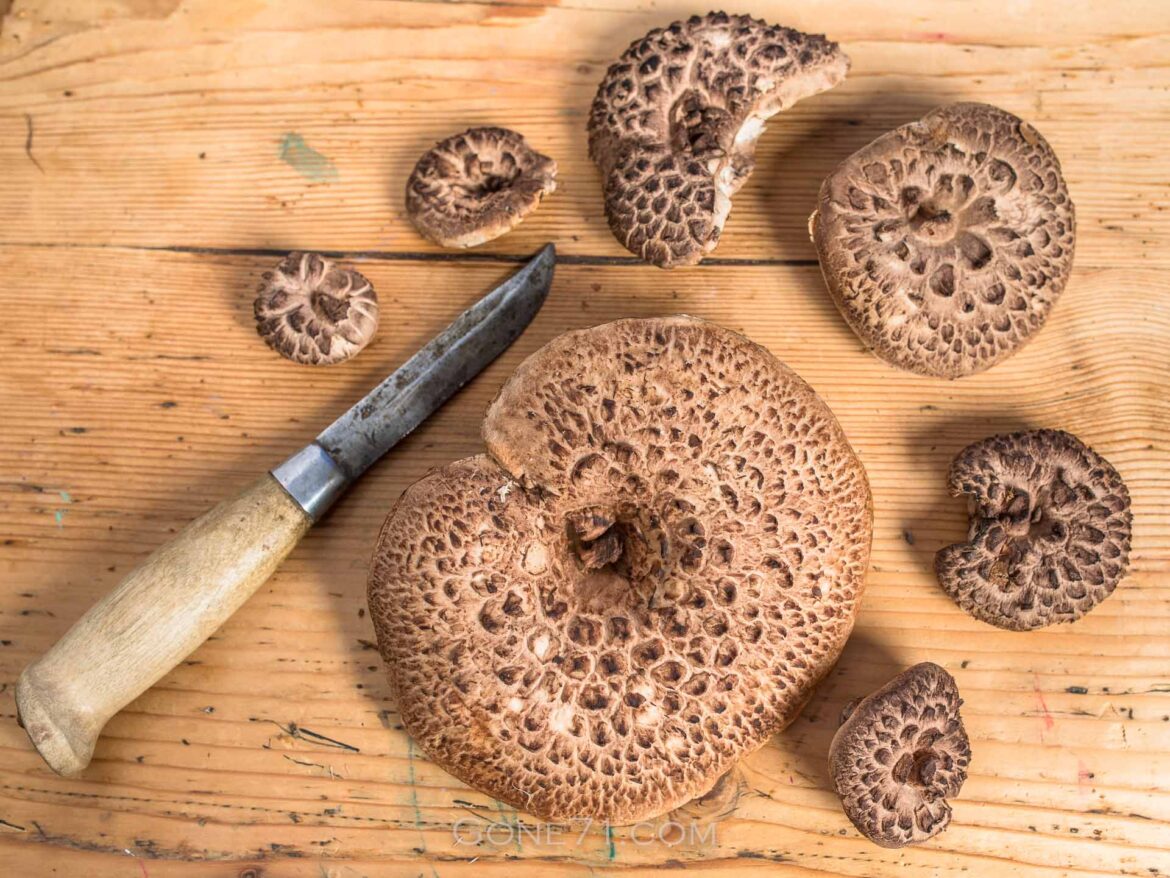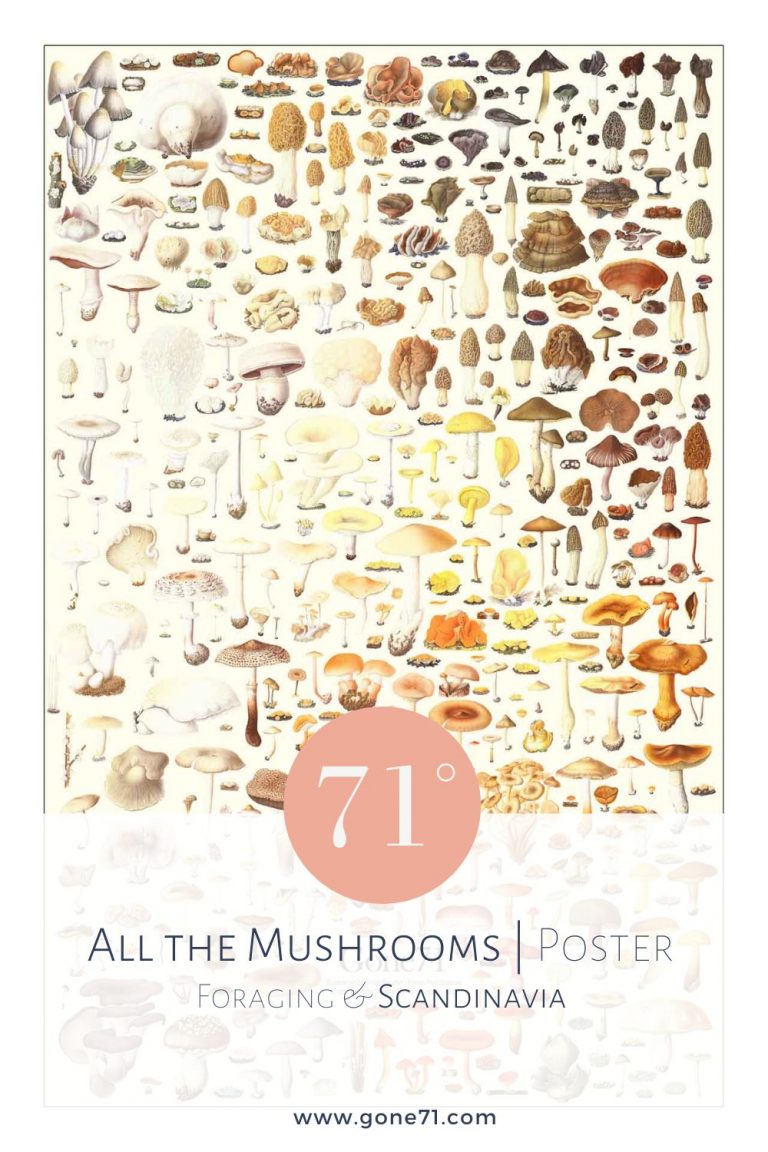swe.: fjällig taggsvamp | nor.: granskjellpigg | fin.: Kuusensuomuorakas | dt.: Habichtspilz
The shingled hedgehog aka hawk’s wing or scaly hedgehog (S. imbricatum) is certainly not the ordinary edible mushroom. They are a real eye-catcher in the forest and we find them often in large quantities and even in big fairy rings. In most mushroom guides it is considered inedible though or recommended for drying as a spice mushroom or pickled like in Scandinavia.
I also collected and dried it for mushroom powder as a seasoning mushroom for quite a while until I came across a recipe recommendation from a good restaurant that had this mushroom on the menu. That got me allerted. Since this mushroom is very common in my region, I immediately set about taking some young specimens with me for food purposes and the result was really surprisingly good.
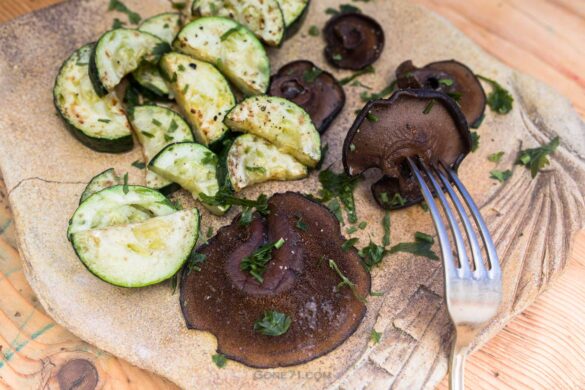
Shingled hedgehog (S. imbricatus) in history
We have found the first indications that this mushroom is edible in an old German “Handbook for Botany” [1840, p. 449] where it simply says “is edible”. Also in the work of McIlvaine (1900) the same or a very similar species (S. squamosus) is considered edible. However, it is difficult to determine whether it was actually collected in the broader population. We know that older generations in eastern Europe have collected this mushrooms at least for some decades.
In the present, this mushroom is slowly getting more and more attention apart from being used as mushroom powder – rightfully so!
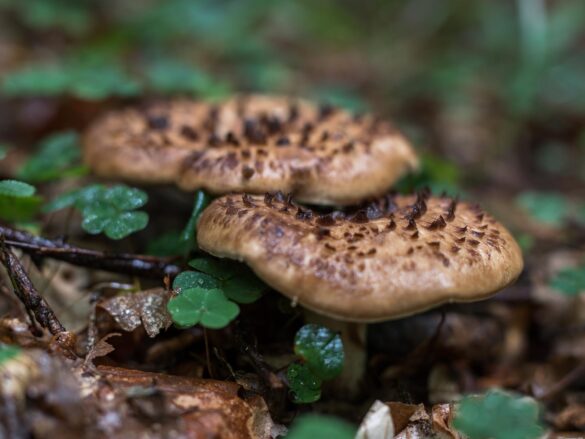
Only harvest mushrooms that you can identify with 100% certainty! The consequences can be life threatening if you are wrong. If you have the slightest doubt: do not eat the mushroom! This is not a mushroom guide! For correct identification consult a mushroom expert.
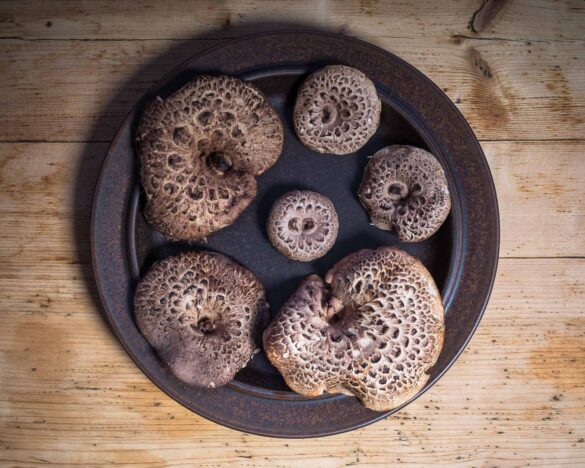
Appearance and habitat of the shingled hedgehog
This mushroom grows in the company of various conifers. Depending on the symbiosis partner, a distinction is made between different species. The best known shingled hedgehog (S. imbricatum) is in symbiosis with spruces. The very similar S. squamosus is found in accompaniment to pines and has very similar external and similar culinary properties. Some sources say that the shingled hedgehogs are even better suited to the kitchen at pine trees. These species were formally treated as one and the same and we suspect that many mushroom hunters still do not distinct these species. Genetically they are different though.
The shingled hedgehog grows mainly in coniferous forests, but can also be found in parks and gardens and is mainly found from summer to late autumn. It has a spicy smell and is ideally very mild in taste.

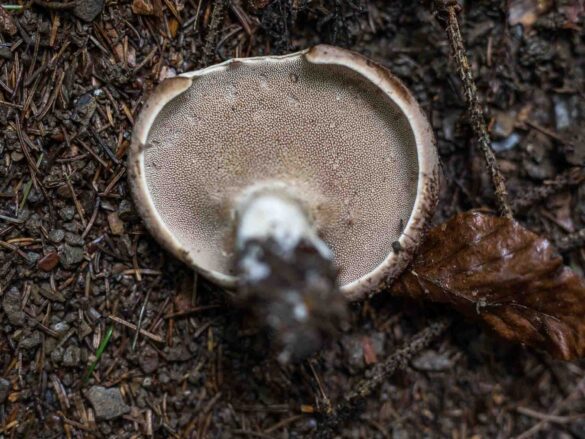
diameter: we read reports of up to 30 cm
months: July – October
colours: whitish-brown, with darker scales
habitat: spruce, pine
taste (raw): mild, older specimen can be bitter
consumption: cooked
Confusion of the shingled hedgehog (S. imbricatus)
The most important distinguishing features (Central Europe) are the brown cap with the much darker large scales and the “teath” instead of pores or gills as a spore bearing structure on the underside.
To avoid confusion with other inedible species (e.g. S. fennicus (scabosus), S. leucopus…) or old bitter specimens, we make a taste test. As soon as this mushroom tastes bitter, we no longer collect it. This mainly applies to older specimen. We have also read that in some rare cases there have been intolerances such as gastrointestinal disorders.
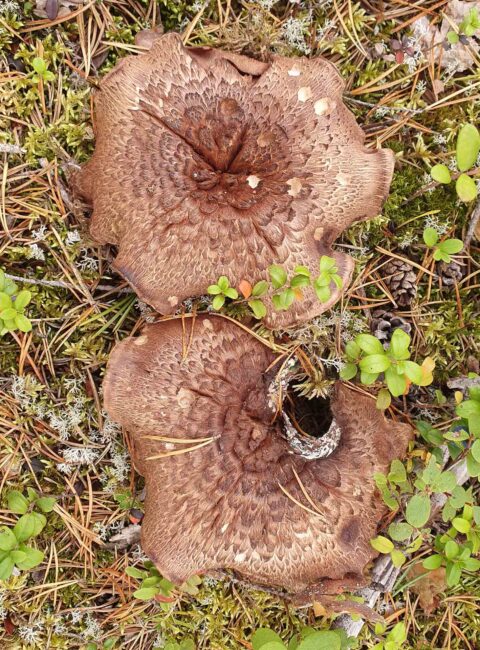
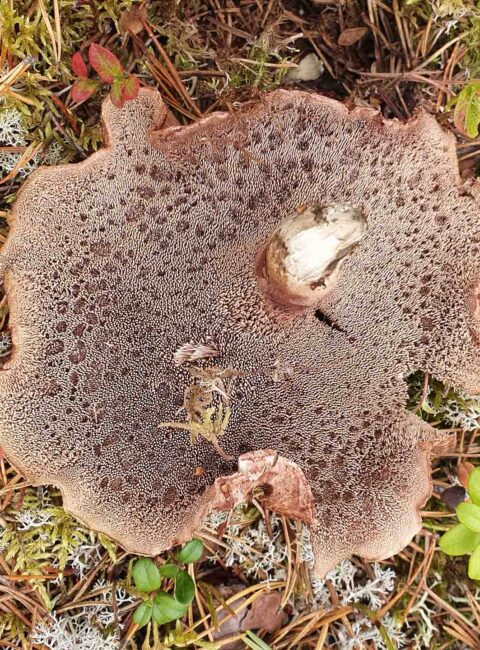
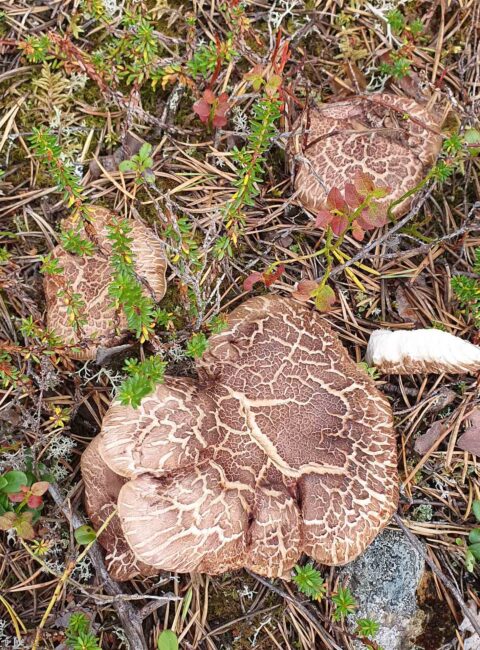
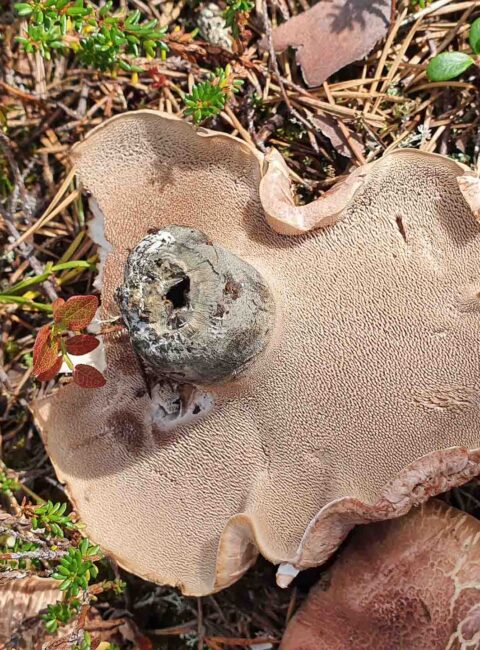
Confusion with the dryad’s saddle (Cerioporus squamosus)
Another potential confusion partner is the dryad’s saddle (Cerioporus squamosus). This mushroom grows on wood though, growing predominantly in spring and has pores on the underside. Also the colour is of a much lighter tone. Dryad’s saddles are also considered edible (when young).
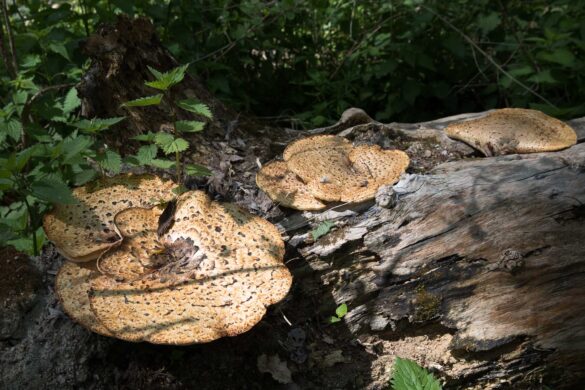

Shingled hedgehog in the kitchen
The shingled hedgehog has a reputation for being very bitter. In our experience, however, this mainly applies to older specimens. Young fresh mushrooms have a very intense taste of their own, but we think they are ideal for the pan.
Cleaning shingle hedgehogs
Unfortunately, bugs also find the mushrooms very attractive and therefore you have to be very careful to check for infestation. In our experience though, very often the infestation only affects the stem and the cap that we actually use in the kitchen is untouched.
After we had successfully carried out our identification and taste test in the forest and the young specimens were allowed to go home with us, we immediately set about cleaning the fresh fruit bodies and preparing them for cooking. We cleaned the caps from dirt and removed the stems. In some cases you might want to use a brush – avoid cleaning with water as with all mushrooms.
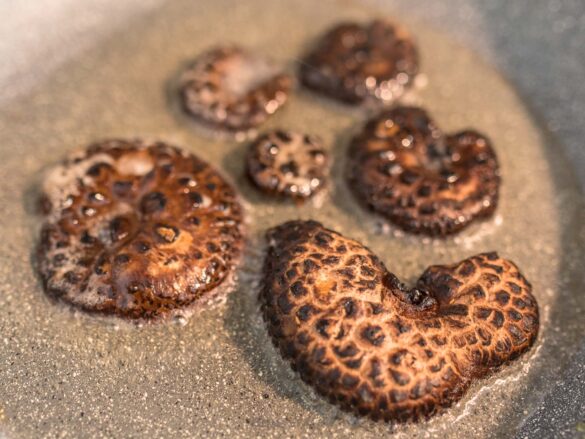
Tim to fry our shingle hedgehogs
In the said restaurant, the mushrooms were simply fried on both sides and served with a side dish. In the pan, the mushrooms will turn very dark and almost black in color relatively quickly. That shouldn’t put you off. We were really surprised by the taste. The mushrooms have an intense taste of their own, which differs significantly from other mushrooms such as milk caps or Russolas, but is in no way unpleasant. This mushroom is certainly not suitable for everyone and anyone who wants to expand their taste horizons should see for themselves.
Other recipe ideas for this mushroom include marinated and grilled, steamed, in a mushroom soup, or dried and soaked again for further use. However, we have not yet tried these preparation methods ourselves. But there are no limits to your own ideas as long as you cook the mushrooms well.
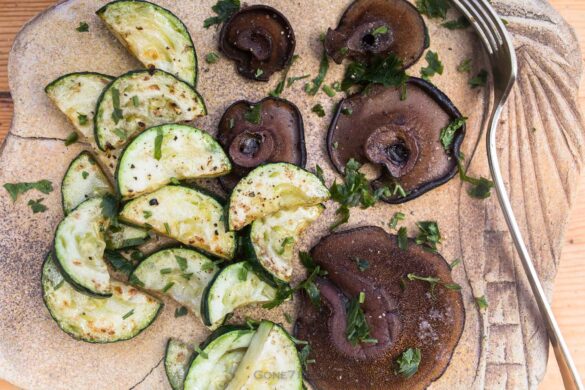
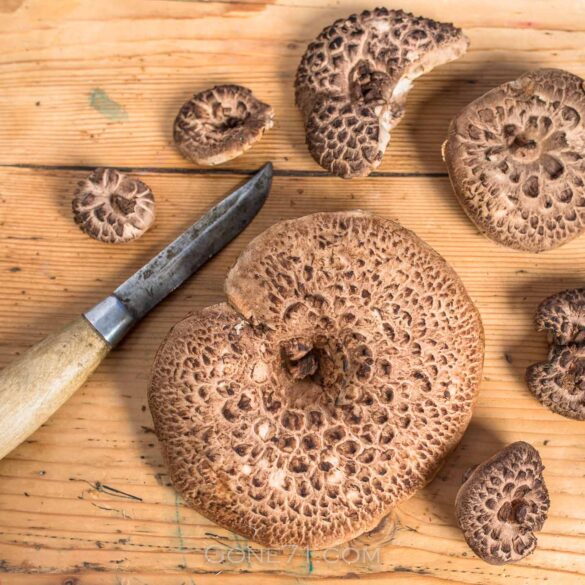
Ingredients
- 400g shingled headgehogs (S. imbricatus)
- butter or cooking oil
- salt, pepper
- parsley
- vegetables of choice and season (we had zucchini)
Instructions
- Clean the fresh mushrooms and remove the stems.
- Fry in a pan on both sides for about 10 to 15 minutes.
- Season with salt and pepper and sprinkle with parsley.
- Seasonal vegetables are a good side dish. We just served zuchhini from our garden here.
Notes
Make sure the mushrooms are well cooked to avoid stomach problems
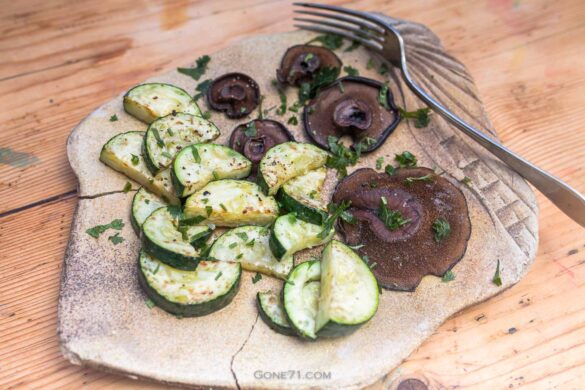
We have compiled this overview with the best of knowledge and belief, but do not claim to be complete and reserve the right to make errors.
Learn more about poisonous mushrooms and mushroom poisons here
↓↓↓
Find some inspiration in other mushroom recipes
↓↓↓
